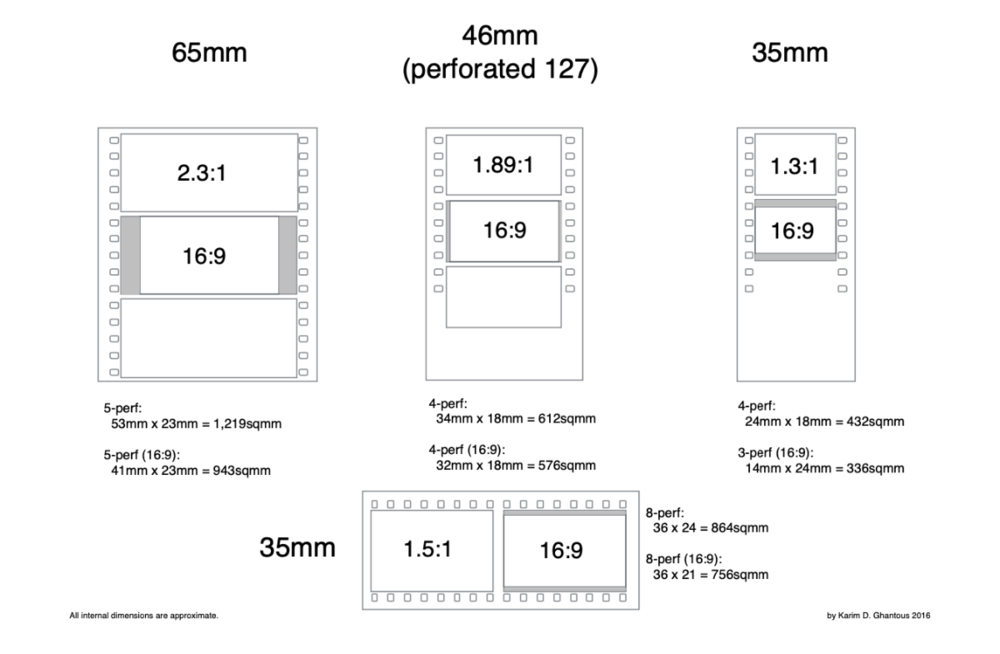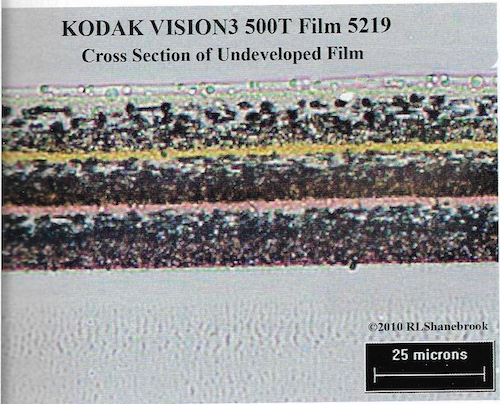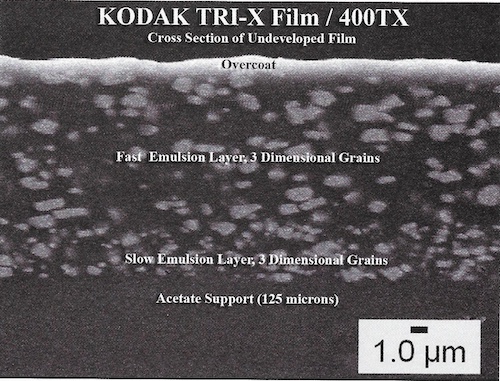-
Posts
567 -
Joined
-
Last visited
Everything posted by Karim D. Ghantous
-

Book about film vs digital
Karim D. Ghantous replied to Leonardo Gastel's topic in General Discussion
I doubt that. It's surely not that difficult. Although he's not the first do to it, he actually showed us how he did it. It does take time though, I accept that. -

Book about film vs digital
Karim D. Ghantous replied to Leonardo Gastel's topic in General Discussion
Is that true, though? The way I see it, you only need to create a LUT once. The trick is, does the LUT fall apart at a certain point? Or is it all easy sailing? I don't see any discussion on this, if it's a thing to begin with. -

Book about film vs digital
Karim D. Ghantous replied to Leonardo Gastel's topic in General Discussion
I haven't seen every single test that could be done, but I have seen a lot of comparisons. You just have to find them. I could virtue signal and say that you should not care about gear, but I won't, because that's a lie. If you're a DP, your whole job is to care about gear. The audience doesn't have to care, but you do. It's also a lie to say that every situation needs a different camera, because a good camera can be used for anything. There are small, local exceptions to this, however. I don't think I need to give you examples. Lenses are a whole different kettle of fish, though, but you should also care as much about lenses as you do about cameras. There are lots of useful lens comparisons out there. This Zacuto shootout was very useful, IMHO, in showing the technology of the time - but beware, because it's very out-dated now. It was done long before the GH5, the A7S, and the Dragon sensor. Here's episode 1: What is not out-dated is the measurements done on 5219 and 5213. Those emulsions haven't changed. The test also shows that the now outdated MX sensor was two stops behind the Alexa's sensor, which is pretty much what everyone observed at the time. What is true is that if the sensor is good enough, you can emulate any colour palette with it. Perhaps it won't work in all situations, but it's very, very reliable. Look at how Fujifilm puts film profiles in their digital cameras. What digital can't do is capture light sources properly under low ambient light, although the Monstro might possibly be good at it (I haven't seen enough data). The best example is traffic lights. I do prefer film in a lot of ways, but the good news is that if you can't afford it, digital is more than good enough these days. There are subjective reasons to shoot film over digital, but they won't be the same for everyone. Because of that, there's no real 'right' answer. It's a matter of understanding the compromises. What is lacking is a more comprehensive comparison done by one group of people. That's no surprise, because they are not easy to do, and they aren't cheap either. However, you can find a lot of comparisons done by different people - it's just a matter of searching. -
I like your optimism! Usually I'm the guy who's like, "WE CAN DO IT." But here, I'm not holding my breath. ? As for the horizontal 16mm idea, I'm not a fan of a long horizontal movement. The magazines have to be wider, or you lose running time. I'm not a fan of VV either, FWIW. Just IMHO! I do want to see a 2-perf 16mm SLR camera. 110 will have to do for now though. Yes, it does. But, running time per foot for VV would be less than for 4-perf 46mm. And you have to deal with a horizontal transport. But, the VV negative is noticeably bigger. Pick your value point. Film stocks are so good now that you could replace 65mm with 46mm; and 15-perf 65mm with 8-perf for IMAX. Especially if you are using 50D stock. This also assumes that you are scanning the camera negative for a digital deliverable.
-
Just recently I reminded myself of a concept I dreamed up in 2016. The concept was a 'new' film format, based on 127 rollfilm. The point was to find a format that gave more surface area than S35, but wasn't as cumbersome as Vistavision, nor as expensive as 65mm. Pulling film by 4 perforations is much better than pulling by 8. Also, a vertical transport is more operator friendly than is a horizontal transport. Now, forget the practicalities of establishing a new format. We all know it's not an easy thing to do. The film is the easy bit, but the cameras, lab equipment and scanners are not. What I want to ask you all is one simple question: if it existed, would you use it, and do you think others would use it? I only included full frame and 16:9 comparisons with 35mm and 65mm, but you could of course imagine other configurations. For example, a 3-perf 46mm frame is over twice the surface area of a 2-perf 35mm frame. It's also slightly more than 4-perf 35, so you could have a 2.35:1 aspect with approximately the same surface area as anamorphic 35.
-
True. But adding a third layer? Actually that's not really what I was thinking about. I was just thinking about adding at least two more stops of DR. Having said that, I don't like dull imagery either, whether b&w or colour. I often wonder why they don't actually release T-Max for motion picture use. That's a good point there. I did mention it to Kodak once. I'll mention it again.
-
Compare these two cross-sections. 5219 vs Tri-X. The twelve layers in 5219 are about 40 microns high. The two layers in Tri-X are 12 microns high. There is easily room for one more layer in Tri-X, and technically you could fit seven layers and still be within 40 microns. The reason why I'm suggesting a third layer for Tri-X is to increase DR. I bet that if you fit just one more layer in any b&w film, the DR will be industry leading. Images are from Making Kodak Film by Robert L. Shanebrook, 2010.
-
I have seen some results, comparing a scanner vs a Canon camera, with the same negative. Sadly I lost the URL. In short, the Canon DSLR was terrible, the Nikon scanner was fine except that the edges were a bit soft, which could be because the negative wasn't set up right.
-
Camera manufacturers love to give us features, which is nice. But where was JPEG 2000? We could have had it over a decade ago. HEIF has only just begun to be implemented, which is better than nothing. JP2K/HEIF files are the ideal compromise. You can recover exposure and WB errors pretty easily, while not having to deal with RAW converters.
-

Some of the water we drink is pretty filthy
Karim D. Ghantous replied to Daniel D. Teoli Jr.'s topic in Off Topic
Here in Melbourne, our tap water is okay to drink, meaning that it damages you only with long term use. But I only consume either pure water or bottled, alkaline water. Nobody should be drinking tap water. -

Absolutely bonkers high ISO performance
Karim D. Ghantous replied to Mark Kenfield's topic in General Discussion
How can it get worse than it is now? LOL I think we hit peak Woke already. Have you seen Bill Maher's take on it? Hilarious. I don't think so. This year could be the bottom. We will see. The price of progress. ? -
That is fundamentally a legitimate feature of high resolution sensors. Several productions shoot their cameras full frame and compose for a window. You just can't go crazy with it, that's all. Back when the Leica M9 was relatively new, I recall that one photographer was surprised at how much he could crop in. He basically said that he preferred the M9 with a short telephoto lens than a contemporary DSLRs with a long telephoto. Of course, a razor sharp lens is essential.
-
This question is for anyone, particularly colorists. What's your favourite or preferred method of the four options below? Assume that the sensor or the negative has in all cases encapsulated the full DR of the scene, so the histogram will show 100% of the image well within its boundaries. 1. Expose for the shadows and bring down the highlights 2. Expose for the highlights and bring up the shadows 3. Expose for the mid point between highlights and shadows, and adjust both 4. Expose between highlights and shadows with bias towards one or the other, and adjust both Would your choice be different if you were shooting ProRes vs RAW vs 10bit 4:2:2 compressed?
-

DSLR (for stills) That handle RGB clipping well?
Karim D. Ghantous replied to Max Field's topic in General Discussion
Yes, particularly the Canons. If you want the best possible image quality, buy a Fuji GFX 100s, or a Sony A7SIII, shoot RAW, and underexpose as much as you can get away with. I am working on a general solution to this kind of problem, but I won't have the ability to do anything for several months. I will of course post my attempts on this site. Even if it isn't practical it might lead to something that is. -

An old project that so nearly...
Karim D. Ghantous replied to Phil Rhodes's topic in General Discussion
FWIW you got your branding right! I have a dream... to make a set of manual focus lenses for mirrorless cameras (with unique attributes that you won't get anywhere else). Can I get there? With a good team, yes. I will be providing the seed capital, but that can only go so far. The project will be crowdfunded. I have the branding and the idea. Now all I have to do is wait for my investments to pay off... -

Underexposing KV3 7219
Karim D. Ghantous replied to Alberto Bañares 's topic in Film Stocks & Processing
Well, I'm not so sure. I would not object to shooting in VV or 65mm! -

Underexposing KV3 7219
Karim D. Ghantous replied to Alberto Bañares 's topic in Film Stocks & Processing
That looks FANTASTIC. Light sources were captured very well, and the overall image quality is terrific. It goes to show that you don't need to push it in the lab. I have said this before, but Downton Abbey, as nice as it looks, would have looked a little better if it were shot on 16mm. I truly think that it's too early to move to digital. Even 2021 is too early (Edit: i.e. for narrative, not for commercials or documentary). I really do love this medium, although at the same time I'm thinking about an idea which might fix the last problem with digital: light sources. It doesn't matter how much DR there is in a digital sensor, it cannot capture light sources properly. If that gets fixed, the motivation to shoot film might be tempered. We'll see. -

Underexposing KV3 7219
Karim D. Ghantous replied to Alberto Bañares 's topic in Film Stocks & Processing
How do I join? LOL Lucky bum! BTW what scanners do you have? -
To the best of my knowledge, 500T film needs an 85b filter to warm up a daylight source. That's at a cost of 2/3 of a stop. So in that case, the ASA comes down to 320, which is 1/3 of a stop faster than 250. Given that Kodak makes a 250D stock, is there room in modern productions for a 500T stock? I suppose that a lot of LED panels have a variable temperature, and that's another thing to think about. But, if it's just easier to standardise to daylight, maybe productions will eventually just do that. The counterpoint would be that Kodak could tweak 5219 and make it daylight balanced, thus giving it relevance again. Also, 500T might push better than 250D. But I don't have any idea about that. What are your thoughts?
-

Underexposing KV3 7219
Karim D. Ghantous replied to Alberto Bañares 's topic in Film Stocks & Processing
I haven't seen a direct comparison with colour film, but I have with b&w film, and there was no difference. I would not be surprised if colour film behaved very differently. Alberto, I look forward to seeing the video. I found this, which may be of interest. I think it looks great:








